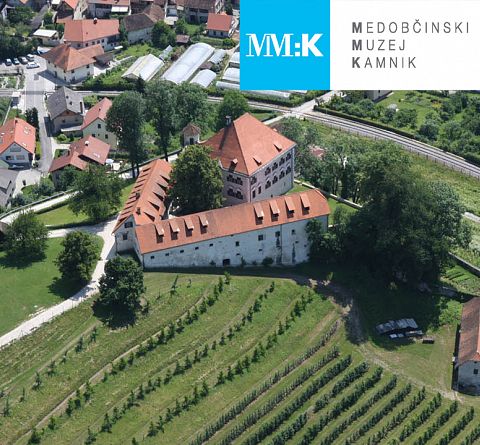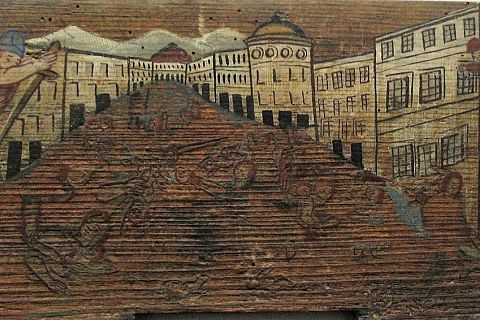The assassination of innocent children, beehive painting, wood, 1869
A biblical motive for the killing of innocent children in Bethlehem is beehive painting. King Herod commissioned the assassination of all the children in Bethlehem, because he wanted to get rid of Jesus from the path, which the wise men from the East labelled him as “the new born king of the Jews.” In the Catholic world, the holiday of innocent children has been celebrated since at least the middle of the 6th century on December 28th. On this painting there is an extremely interesting attempt at the painted perspective.
The Beehive painting is a painted wooden stem that closes the front of the beehive. This kind of folk art, typical of Slovenia, was created in Gorenjska and Koroška region, and from there it spread to the territory of the whole of Slovenia. The oldest Beehive paintings date back to the middle of the 18th century, and the painting largely ends after the end of the First World War. The “golden age” of the Beehive paintings extensions between the years 1820 and 1890. The paintings made by simple and self-taught artists have mostly figural motifs, and more than 600 different motifs are known, of which about half are devious. The beekeepers had Beehive paintings for several purposes: they separated their hives from each other and from foreign, and the biblical motives also kept the health of the bees.




